
Copyright © 2023 ESCI, LLC - All Rights Reserved.
SESOIL vs. VLEACH
Both SESOIL and VLEACH are vadose zone models used to establish site-specific cleanup objectives. Rather than providing a technical description of the model capabilities, this review looks at variations in model results for comparable input parameters. SESOIL SESOIL is a one-dimensional vertical transport screening-level model. It can simulate transport and fate based on diffusion, adsorption, volatilization, biodegradation, cation exchange, and hydrolysis. SESOIL contains three sub- models that simulate: soil moisture movement, contaminant transport, and erosion. SESOIL was developed for the US Environmental Protection Agency (USEPA) in 1981 by Arthur D. Little, Inc. An enhanced version of SESOIL contained in the SEVIEW software was used. VLEACH Like SESOIL, VLEACH, is a one-dimensional vadose zone transport and fate model. It simulates transport and fate based on partitioning of organic contaminants between soil moisture, soil air, and adsorbed on soil phases. Unlike SESOIL, VLEACH cannot simulate biodegradation nor does it deal with varying soil properties with depth. It was developed by CH2M Hill in 1990 for Region 9 of the USEPA. The public domain version VLEACH 2.2a was used in this review. Model Parameters Input parameters were based on the release of benzene in sandy soil. Soil contamination was established from the surface to a depth of 5 feet. Depth to groundwater was varied between 10 and 25 feet. Climatic Parameters The SESOIL hydrologic sub-model uses climatic information along with other parameters such as soil properties and depth to groundwater to establish infiltration rates. The climatic data for Milwaukee, Wisconsin was used. Results of the SESOIL hydrologic sub-model were used to establish the infiltration rate of 13.28 inches per year in VLEACH. Water content in VLEACH was also established based on SESOIL results. This was done as VLEACH requires the use of some other model to establish these parameters. Chemical Parameters Chemical parameters for benzene contained in the SEVIEW chemical database were used in both models. Soil Parameters Soil parameters were based on sandy soil. Specific parameters were based on information provided in the SEVIEW help file and User's Guide. Soil Profile Parameters The SESOIL column was divided into 40 sub-layers of equal thickness. While the VLEACH vertical column was divided into 40 cells of equal thickness. A contaminant load of 1.0 µg/g was established in the upper 5 feet in both models. Sensitivity analysis was performed by varying depth to groundwater from 10 to 25 feet. Results SEVIEW was used to generate hydrologic and pollutant cycle reports to document the SESOIL results. A custom program was developed that extracted VLEACH soil moisture concentration data in the output file and saved this data in an Excel spreadsheet format. Excel was then used to locate the maximum concentration and to plot the results. A summary of the results are presented below. Discussion As you can see from the results although both SESOIL and VLEACH are vadose zone models the predicted leachate concentrations are quite different. Such large discrepancies are not unusual, as there is often a greater difference between vadose zone models than between most groundwater models. There are many reasons for the differences between the SESOIL and VLEACH results. Perhaps the most important is the way the models handle the movement of soil moisture within the vadose zone. VLEACH assumes steady state recharge downward towards the water table. In reality, steady state infiltration through the vadose zone rarely occurs. Infiltration rates typically vary from month to month based on numerous factors such as precipitation and temperature. Furthermore, much of the precipitation entering the soil column is often returned to the atmosphere via evapotranspiration prior to it ever reaching groundwater. Additional factors influencing soil moisture movement and recharge rates include capillary rise and depth to groundwater. Simply calibrating VLEACH to the overall infiltration rate predicted by SESOIL does not account for these processes. Conclusions Based on this review the following conclusions were made: • SESOIL allows more than 530 times more contamination to remain in place, • SESOIL is easier to uses as it establishes infiltration rates, and • Simply calibrating VLEACH to SESOIL infiltration rates does not produce comparable results. Given these results it may appear that SESOIL may not be conservative enough to meet regulatory requirements, however, this is not the case. In fact, numerous regulatory agencies have used SESOIL to develop their baseline cleanup objectives. What this review indicates is that VLEACH is even more conservative than SESOIL. It is not surprising that regulatory agencies will accept site-specific cleanup objectives based on VLEACH. However, this may mean that funds are needlessly being spent cleaning up contamination which poses minimal environmental threat.


Parameter
VLEACH
SESOIL
Load (µg/g)
1.0
1.0
Load Thickness (ft)
5.0
5.0
Number of Layeres (Cells)
40
40
Depth to Groundwater (ft)
10 & 25
10 & 25

SEVIEW
Transport and fate modeling software
SESOIL Results Used as Input to VLEACH



Parameter
Value
Groundwater Recharge (inches/year)
13.28
Soil Water Content (fraction)
0.07



Parameter
VLEACH
SESOIL
Water Solubility (mg/L)
1750
1750
Organic Carbon Adsorption Coefficient
(µg/g)/(µg/ml)
61.7
61.7
Henry’s Law Constant
(atm-m
3
/mol)
5.55E-3
5.55E-3
Air Diffusion Coefficient
(cm
2
/sec)
0.088
0.088



Parameter
VLEACH
SESOIL
Bulk Density (g/cm
3
)
1.40
1.40
Effective Porosity
(fraction)
0.30
0.30
Permeability (cm/sec)
- -
3.2E-4
Soil Pore
Disconnectedness
Index (dimensionless)
- -
3.7
Results 10 foot Depth to Groundwater



Parameter
VLEACH
SESOIL
Maximum Leachate
Concentration (mg/L)
1.13
0.00212
Year Max
2.0
2.0
Results 25 foot Depth to Groundwater



Parameter
VLEACH
SESOIL
Maximum Leachate
Concentration (mg/L)
0.438
0.000818
Year Max
4.0
3.0


SESOIL vs. VLEACH
Both SESOIL and VLEACH are vadose zone models used to establish site-specific cleanup objectives. Rather than providing a technical description of the model capabilities, this review looks at variations in model results for comparable input parameters. SESOIL SESOIL is a one-dimensional vertical transport screening-level model. It can simulate transport and fate based on diffusion, adsorption, volatilization, biodegradation, cation exchange, and hydrolysis. SESOIL contains three sub-models that simulate: soil moisture movement, contaminant transport, and erosion. SESOIL was developed for the US Environmental Protection Agency (USEPA) in 1981 by Arthur D. Little, Inc. An enhanced version of SESOIL contained in the SEVIEW software was used. VLEACH Like SESOIL, VLEACH, is a one-dimensional vadose zone transport and fate model. It simulates transport and fate based on partitioning of organic contaminants between soil moisture, soil air, and adsorbed on soil phases. Unlike SESOIL, VLEACH cannot simulate biodegradation nor does it deal with varying soil properties with depth. It was developed by CH2M Hill in 1990 for Region 9 of the USEPA. The public domain version VLEACH 2.2a was used in this review. Model Parameters Input parameters were based on the release of benzene in sandy soil. Soil contamination was established from the surface to a depth of 5 feet. Depth to groundwater was varied between 10 and 25 feet. Climatic Parameters The SESOIL hydrologic sub-model uses climatic information along with other parameters such as soil properties and depth to groundwater to establish infiltration rates. The climatic data for Milwaukee, Wisconsin was used. Results of the SESOIL hydrologic sub-model were used to establish the infiltration rate of 13.28 inches per year in VLEACH. Water content in VLEACH was also established based on SESOIL results. This was done as VLEACH requires the use of some other model to establish these parameters. Chemical Parameters Chemical parameters for benzene contained in the SEVIEW chemical database were used in both models. Soil Parameters Soil parameters were based on sandy soil. Specific parameters were based on information provided in the SEVIEW help file and User's Guide. Soil Profile Parameters The SESOIL column was divided into 40 sub-layers of equal thickness. While the VLEACH vertical column was divided into 40 cells of equal thickness. A contaminant load of 1.0 µg/g was established in the upper 5 feet in both models. Sensitivity analysis was performed by varying depth to groundwater from 10 to 25 feet. Results SEVIEW was used to generate hydrologic and pollutant cycle reports to document the SESOIL results. A custom program was developed that extracted VLEACH soil moisture concentration data in the output file and saved this data in an Excel spreadsheet format. Excel was then used to locate the maximum concentration and to plot the results. A summary of the results are presented below. Discussion As you can see from the results although both SESOIL and VLEACH are vadose zone models the predicted leachate concentrations are quite different. Such large discrepancies are not unusual, as there is often a greater difference between vadose zone models than between most groundwater models. There are many reasons for the differences between the SESOIL and VLEACH results. Perhaps the most important is the way the models handle the movement of soil moisture within the vadose zone. VLEACH assumes steady state recharge downward towards the water table. In reality, steady state infiltration through the vadose zone rarely occurs. Infiltration rates typically vary from month to month based on numerous factors such as precipitation and temperature. Furthermore, much of the precipitation entering the soil column is often returned to the atmosphere via evapotranspiration prior to it ever reaching groundwater. Additional factors influencing soil moisture movement and recharge rates include capillary rise and depth to groundwater. Simply calibrating VLEACH to the overall infiltration rate predicted by SESOIL does not account for these processes. Conclusions Based on this review the following conclusions were made: • SESOIL allows more than 530 times more contamination to remain in place, • SESOIL is easier to uses as it establishes infiltration rates, and • Simply calibrating VLEACH to SESOIL infiltration rates does not produce comparable results. Given these results it may appear that SESOIL may not be conservative enough to meet regulatory requirements, however, this is not the case. In fact, numerous regulatory agencies have used SESOIL to develop their baseline cleanup objectives. What this review indicates is that VLEACH is even more conservative than SESOIL. It is not surprising that regulatory agencies will accept site-specific cleanup objectives based on VLEACH. However, this may mean that funds are needlessly being spent cleaning up contamination which poses minimal environmental threat.


Parameter
VLEACH
SESOIL
Load (µg/g)
1.0
1.0
Load Thickness (ft)
5.0
5.0
Number of Layeres (Cells)
40
40
Depth to Groundwater (ft)
10 & 25
10 & 25

SEVIEW
Transport and fate modeling software
SESOIL Results Used as Input to VLEACH



Parameter
Value
Groundwater Recharge (inches/year)
13.28
Soil Water Content (fraction)
0.07



Parameter
VLEACH
SESOIL
Water Solubility (mg/L)
1750
1750
Organic Carbon Adsorption Coefficient
(µg/g)/(µg/ml)
61.7
61.7
Henry’s Law Constant
(atm-m
3
/mol)
5.55E-3
5.55E-3
Air Diffusion Coefficient
(cm
2
/sec)
0.088
0.088



Parameter
VLEACH
SESOIL
Bulk Density (g/cm
3
)
1.40
1.40
Effective Porosity
(fraction)
0.30
0.30
Permeability (cm/sec)
- -
3.2E-4
Soil Pore
Disconnectedness
Index (dimensionless)
- -
3.7
Results 10 foot Depth to Groundwater



Parameter
VLEACH
SESOIL
Maximum Leachate
Concentration (mg/L)
1.13
0.00212
Year Max
2.0
2.0
Results 25 foot Depth to Groundwater



Parameter
VLEACH
SESOIL
Maximum Leachate
Concentration (mg/L)
0.438
0.000818
Year Max
4.0
3.0





















